It’s probably fairly well-known that Honda is the biggest bike firm, certainly in the UK market. But ask folk who’s number two, and you might get a quizzical look. The answer is, of course, Yamaha (at least when it comes to ‘proper’ big bikes). While BMW has the most popular 1000cc+ bike in the R1250 GS and Adventure range, and firms like Lexmoto sell shedloads of small commuter scooters and bikes, it’s the ‘Tuning Fork’ firm that has the widest, most comprehensive sales figures.
From its small scooter range through the big-selling MT-07 and MT-09 variants to the mighty R1 superbike, Yamaha has something for everyone, just about. It won absolutely everything in bike sport last year – from BSB and BSS up to MX2, WSB and MotoGP – so has the performance chops to back up its range too.
Here, then, is our top ten list of the best Yamahas from the last 20 years…
Yamaha FZS600 Fazer 1998-2003
It was launched in the late 1990s as a fairly standard roadster, in the middleweight 600cc class arguably invented by the Suzuki Bandit 600. But the FZS600 Fazer was a proper little gem of a bike when launched – and is actually still packed with fun and performance more than 20 years on.
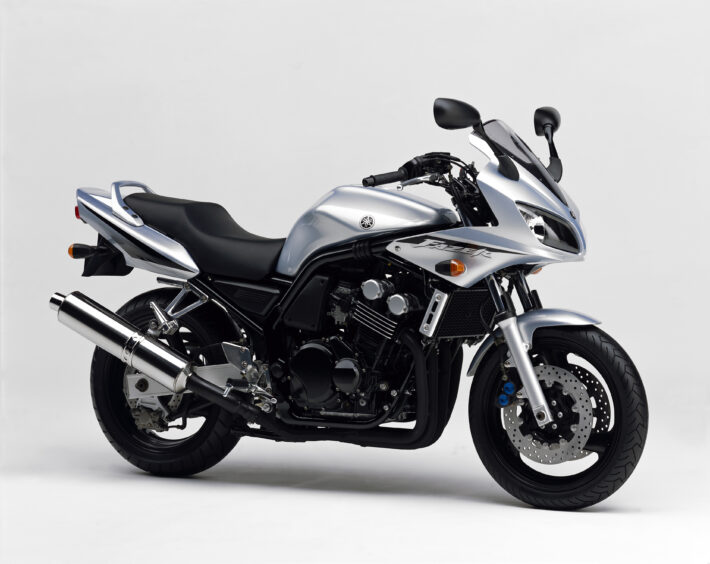
On paper, it’s a bit of a parts-bin special. The inline-four 16v DOHC engine is a tweaked version of the YZF600R Thundercat engine (the block is more upright on the FZS) with carb and cam changes, for less peak power and more midrange. It’s bolted into a basic steel tube frame with aluminium monoshock swingarm, conventional forks, and road-sporty tyres.
A small frame-mounted half-fairing looks a teeny bit dated now, but elevated the Fazer well above the less-useful unfaired Bandit 600 and the Honda Hornet 600 which was launched at the same time (both competitors would later sprout similar fairings to keep up). And Yamaha took another key decision that put the Fazer on top: it fitted the same ‘blue-spot’ Sumitomo four-piston calipers as used on the Thundercat, Thunderace, R1 and R6 sportsbikes. They were (and are) excellent stoppers, and in the super-competitive 600 roadster class, gave the Yamaha a real advantage.
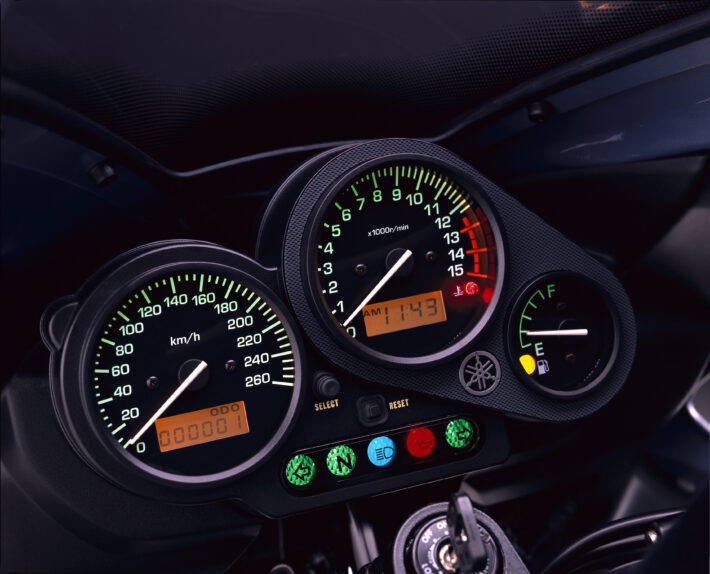
On the road, the Fazer was and is a joy. It’s light, nimble and peppy, with easy handling and a strong, lively motor. The tune is perfect for most riding: round town, twisty backroads, sweeping A-roads, the little 599cc engine is right at home on them all. The old-school carburettors give great fuelling (so long as they’re kept in good order), and while the gearchange can be a little notchy, it’s one of the all-time classic powerplants. In terms of handling, nothing stands out particularly – except those brakes.
The suspension was fine in the late 1990s (but the original parts will be well worn-out now), and the overall handling package more than up to the job. But the brakes were miles ahead of the competition (Honda in particular had deliberately fitted softer pads to the Hornet, to make it more novice-friendly apparently), and on par with full superbikes. Add in the little fairing that made motorways and moderate touring duties very bearable indeed, and you had a bike which delivered far more than you’d think.
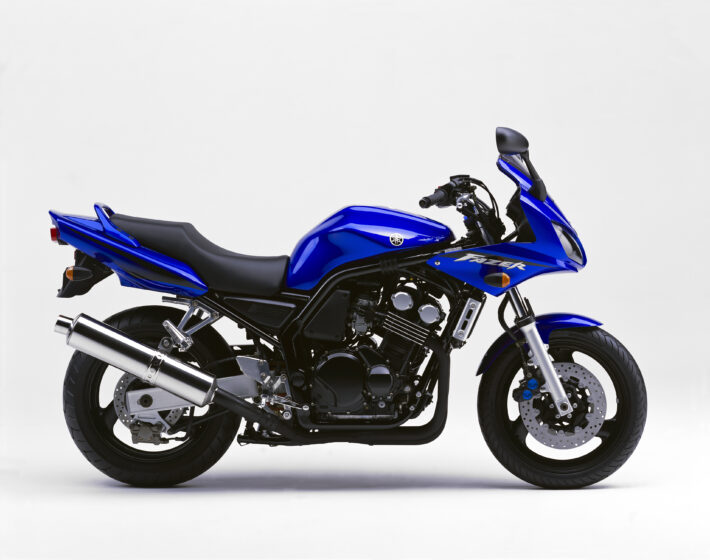
The original bike appeared in 1998, and was updated a couple of times. 2000 saw cosmetic tweaks and a larger fuel tank, and 2001-on bikes got a new ‘fox-eye’ fairing and stainless exhaust headers. That final version fixed the only real complaints about the original square-headlight model: the mild steel headers rusted easily, and the truly woeful performance of those square headlights, which made night riding a proper trial.
The FZS600 was discontinued in 2003, when it couldn’t meet new Euro3 emissions regs. It was replaced by a new Fazer 600, with an R6-based fuel injected engine and aluminium frame, which looked much better on paper – but disappointed on the road. There was more power and tech, but the engine was peakier and the brakes had been downgraded with twin-piston sliding calipers.
Yamaha FZS1000 Fazer 2001-2005
Back in 2000, the Fazer 1000 didn’t exist yet – but it seemed like a blindingly obvious bike for Yamaha to build. The Fazer 600 was an enormous hit in the middleweight roadster sector, and all the pundits expected the firm to do the same thing in the big-bore roadster class. Get a steel tube frame with some decent road running gear and a little fairing, throw the old Thunderace engine in, sell it by the truckload, bosh.
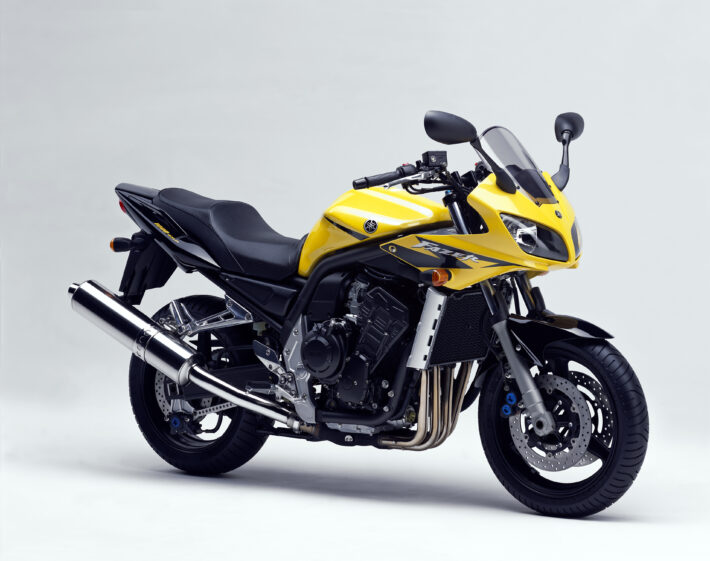
So when the FZS1000 Fazer did arrive in 2001, it was no real surprise at first. But Yamaha had done even better than we thought: it only went and threw a proper YZF-R1 superbike engine in there, rather than the ancient Thunderace lump.
Much of the Fazer 1000 recipe was like the 600: it had great brakes, a useful half-fairing, comfy upright riding position and sharp handling. But it also had an extra 50bhp, while weighing in at a decent 208kg, which catapulted it into a much higher level of performance. With 145bhp and 208kg, the old FZS1000 is almost on par in performance terms with some of the super-nakeds we all know and love today – the BMW S1000R, the KTM Super Duke, the Ducati Streetfighter.
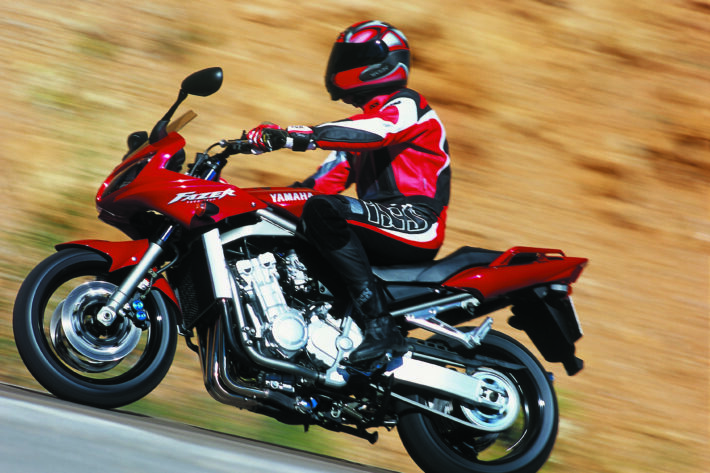
But it was much more of an all-rounder, thanks to the fairing and the large dual seat and tail unit. There was space for two and luggage, and the engine was more than up to the job of hauling it all round, making for a very decent sports tourer. But it also worked a treat on a daily commute – and if you went a bit overboard with the throttle, it could be a proper hooligan on a twisty back road. The relaxed suspension, adjustable suspension and wide bars gave nimble handling, and the R1 brakes were stonking for the time (and still good now).
Some complained that the motor was a little revvy, and as the miles click up, things like the EXUP exhaust valve need some care and attention. And if you’re used to modern bikes, then the lack of ABS and traction control might be a bit disconcerting – there’s no safety net here.
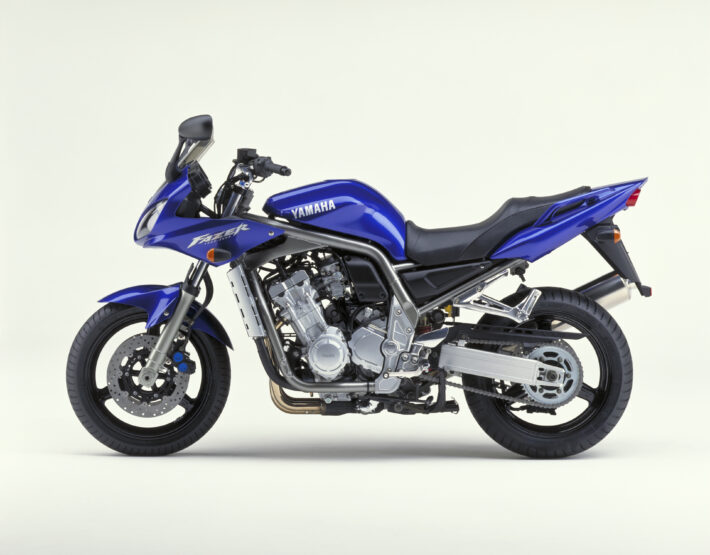
Like the Fazer 600, the FZS1000 was replaced in the mid-2000s when it couldn’t meet emissions regs any more. Also like the Fazer 600, the replacement – the naked FZ-1 and faired FZ-1 Fazer – was a bit of a downgrade in some ways. The second-generation bike had ABS as an option, but was heavier, and the fuel injection was not Yamaha’s finest work. And though the fuel mapping was much improved in later iterations, it took a while to match the rideability of the old carburetted bike – and never really had the aggressive nature of the original.
Yamaha T-Max 2001-onwards
The big-bore maxi-scooter is such a fundamental part of the moto-world these days that it’s hard to think of a time when they didn’t really exist. But they’re only about two decades old really. At the end of the 1990s, there were a few 250cc scooters, and Suzuki had brought out the Burgman 400, extending the scooter up into a more usable long-distance world.
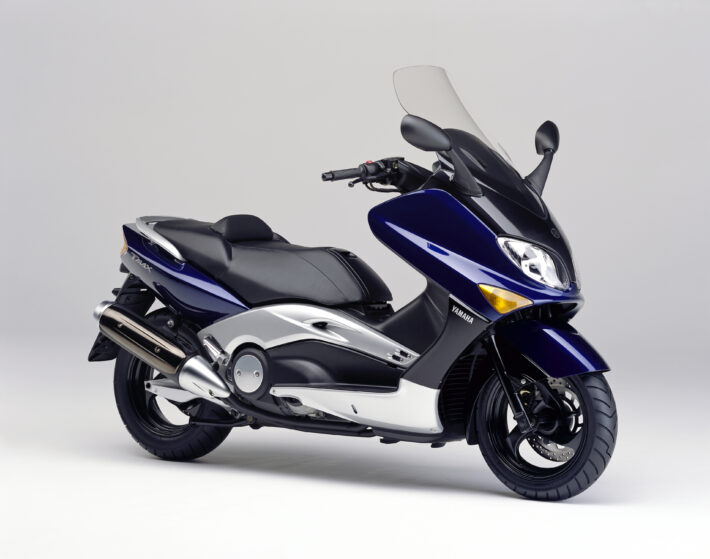
But at the start of the 2000s, the sector exploded, with larger twin cylinder machines like the 2001 Honda Silver Wing and Suzuki Burgman 650 in 2003 – and the Yamaha T-Max first seen in 2000. The T-Max was a different beast from the start though: where the Silver Wing and Burgman in particular were large, soft, capacious touring machines, the T-Max was smaller, sharper, and more focused on performance, especially handling. Its smaller engine was revvier than the Burgman 650, with less outright grunt, but the chassis was much sharper.
A stiff motorcycle-type frame still allowed a step-through design, but was lighter and sportier than the old-tech scooter type frames. Meanwhile the engine was a carburetted, eight-valve DOHC twin with a novel balancer – a third ‘slave’ conrod which operated a balancer weight rather than a piston, cancelling out some of the engine vibes.
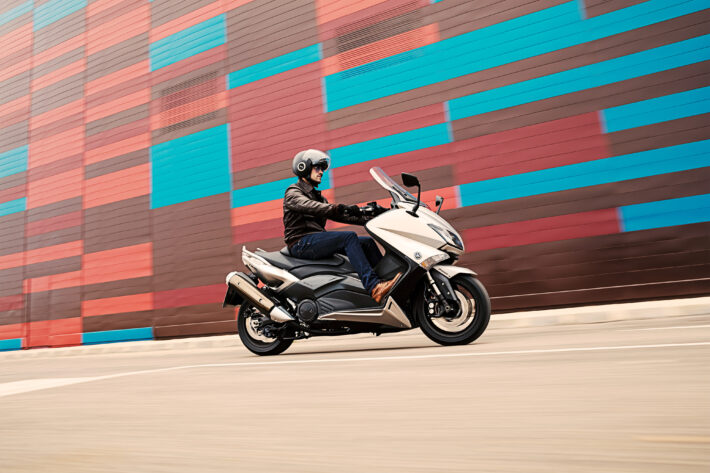
The T-Max had less storage space under the seat than the Burgman, and wasn’t as luxurious in terms of pillion seating and weather protection. But for many riders, the performance was more than acceptable as the trade-off. Yamaha upgraded the engine with fuel injection and more power in 2004, while swapping in larger 15” wheels and a host of other detail mods. 2008 saw a brand new aluminium frame for less weight and better handling, while the engine expanded to a 530cc design in 2012.
Yamaha has continually added more tech to the flagship scooter, with cruise control, keyless ignition, ABS, traction control and LED lighting all appearing. Now, the current T-Max is a 562cc, with 47bhp, a 7” colour LCD dashboard and sharp, up-to-date styling.
Yamaha MT-09 2013-onward
In the late 2000s and early 2010s, Yamaha was in a bit of a rut. The 2008 financial crash had hit it hard, and its bikes were overpriced, with many models in need of a serious overhaul. The R1 and R6 were still incredible pieces of kit, with stunning performance and loads of tech. But away from the supersports sector, things were a bit ‘meh’.
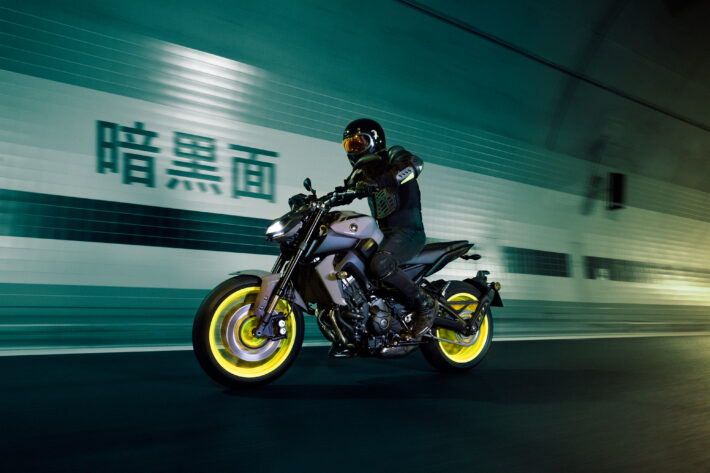
For 2013 though, the firm shook its range up. The CEO had spoken at the Milan bike show about how the firm knew it had to do better, and the MT-09 was the first result. It was an all-new machine, using a three-cylinder engine in a neat roadster chassis – and at a much better price point.
Yamaha had used triple motors before in the ancient air-cooled shaft-drive XS850 and 750 models of the late 1970s – but the MT-09 was a much higher performance design. The water-cooled engine had four valves per cylinder and DOHC heads plus modern fuel injection, putting out around 115bhp. Not earth-shattering power from an 847cc design, but the overall tune of the motor was aimed at rideability and low- to mid-range grunt. For a naked roadster, it was spot-on, with strong bottom end and instant drive.
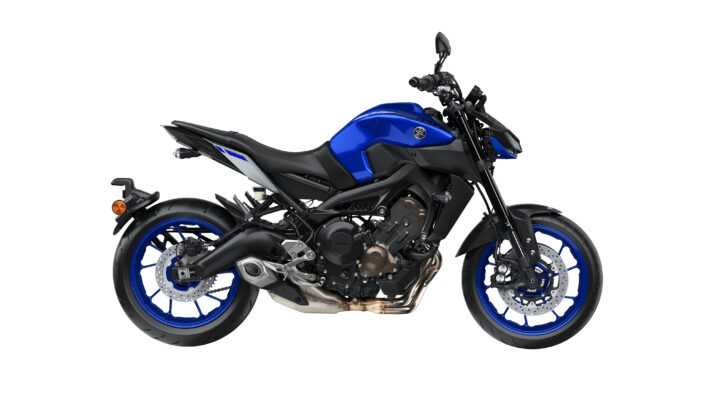
It wasn’t perfect though: the early bikes had rather jerky fuelling, with tight EU emissions regs hampering the power delivery a little. Flat-out, all was good, but on part-throttle there was sometimes a bit of hesitation.
Later bikes (or an ECU remap) sorted the job though, and a fettled MT-09 is a lovely thing to ride. The chassis was good enough in standard form, but the base model suspension was a little soft and underdamped. Yamaha itself offered Öhlins replacement forks and shock as an aftermarket option, and the later SP version of the MT-09 added the shock as standard. The brakes use Yamaha’s solid four-piston calipers up front, and are more than up to the job of stopping a modern upper-middleweight roadster.
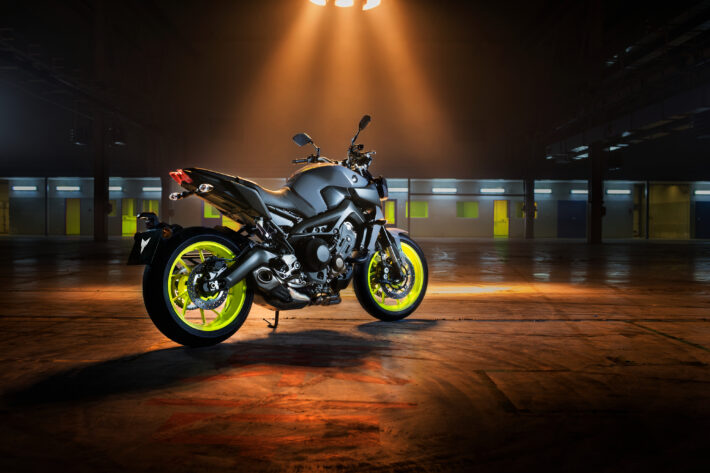
The MT-09 has spawned a few variants as well as the SP – there’s the Tracer 900 soft adventure-touring version and the XSR900 retro-roadster, as well as the three-wheeled Niken, which is mostly MT-09 from the steering head back. The latest version of the MT has a new, larger, 889cc motor, which has even more torque and tech, and is a cracking option in that sub-1000cc naked roadster sector.
Yamaha FJR1300
Before 2001, Yamaha didn’t have a lot of options in the heavyweight touring class. Its long-running FJ1200 had made a decent mile-muncher in the 1980s and 90s if you added some aftermarket luggage, and the Thunderace did solid work as an litre-class fast sport-tourer. And in the US, there was the extreme V4-powered Venture Royale and Royal Star American tourers. But if you wanted to take on Honda’s Pan European or BMW’s R1100 RT in the European full-touring sector, Yamaha had nothing.
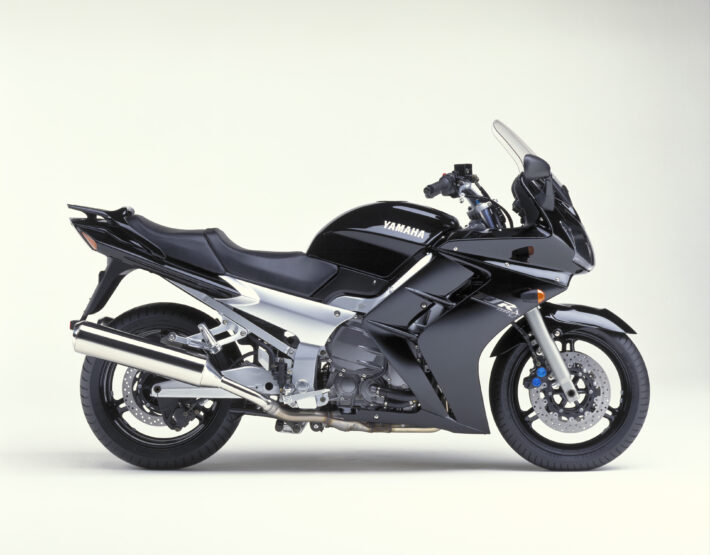
That all changed with a bang in 2001. High on its recent runaway successes with the R1, R7 and R6 supersports bikes, the firm applied that sporty tech to a big tourer, with impressive results. The FJR1300 shared the FJ name and 16-valve cylinder head with the earlier 1200, but had been transformed with modern sportsbike tech: modern fuel injection, water cooling, aluminium beam frame, R1 brakes and decent weight – 264kg dry.
The 1,298cc motor made a hefty 144bhp, with the wide torque spread permitting a five-speed gearbox, and shaft final drive adding to the touring props. A massive fairing complete with electronic windscreen and built-in hard panniers completed the mile-munching spec, and the FJR did a great job of combining sporty performance with the accommodation, protection and usability for two-up touring.
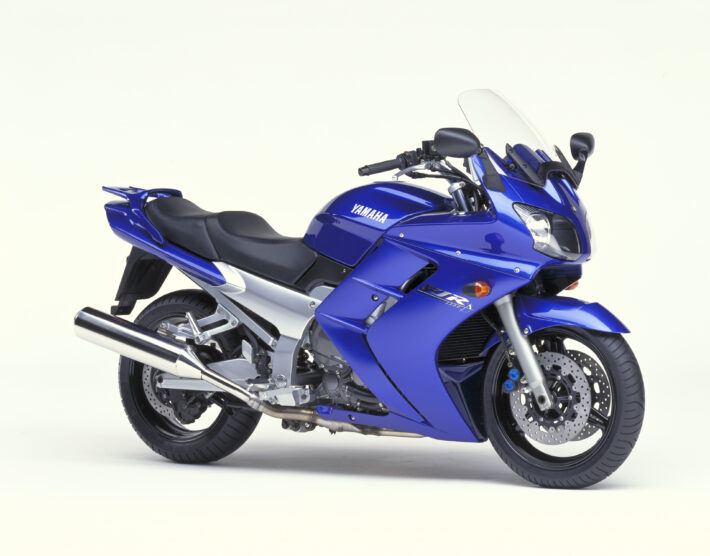
Over the next decade or so, the FJR received a slew of updates. The fairing got bigger, an ABS option appeared, then a semi-automatic gearbox and traction control. A sixth gear was added, the brakes and suspension were tweaked, and it gained cruise control, a more advanced trip computer, LED headlights, cornering lights and even electronically-adjustable suspension. It’s been discontinued in the UK, but a late high-spec model makes a great alternative to the more common options in the class.
One big seal of approval comes from police services worldwide: Yamaha has successfully sold a special emergency services version of the FJR1300, with more powerful electrical system, emergency lights, radio installations and larger luggage setups.
Yamaha YZF-R1
Superbikes aren’t as big a hit as they used to be – but even so, the YZF-R1 maintains its place as a genuinely legendary motorbike. In the pantheon of the great modern sportsbikes, it’s one of the few properly revolutionary machines, alongside the Kawasaki Z1 and GPZ900R, Honda FireBlade and Suzuki GSX-R750.
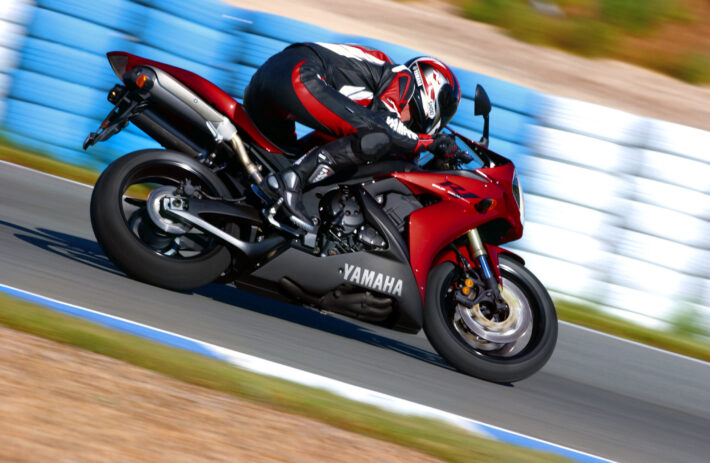
When it first appeared in late 1997, it transformed the litre bike sector, with 400cc-class levels of mass and size, 750 superbike handling and 1,000cc+ hammer-blow power. It blew away the CBR900RR FireBlade, and opened the pathway for litre superbike machines like the GSX-R1000, ZX-10R and BMW S1000RR. It’s also part of the reason superbike racing was able to move up from 750 to 1000cc machines: finally, the big litre bikes could handle, stop and steer like proper sportsbikes.
The original R1 had 40mm carburettors, long-travel forks, super-light 190kg dry weight and 150bhp from its stacked 20-valve engine design. Yamaha had moved the gearbox shafts up behind the cylinders, making the motor shorter from front to back, which in turn allowed a longer swingarm for the same wheelbase. That, plus the slightly longer fork travel boosted stability, and allowed for the light weight and strong power in a manageable package without any of the electronic aids we have today.
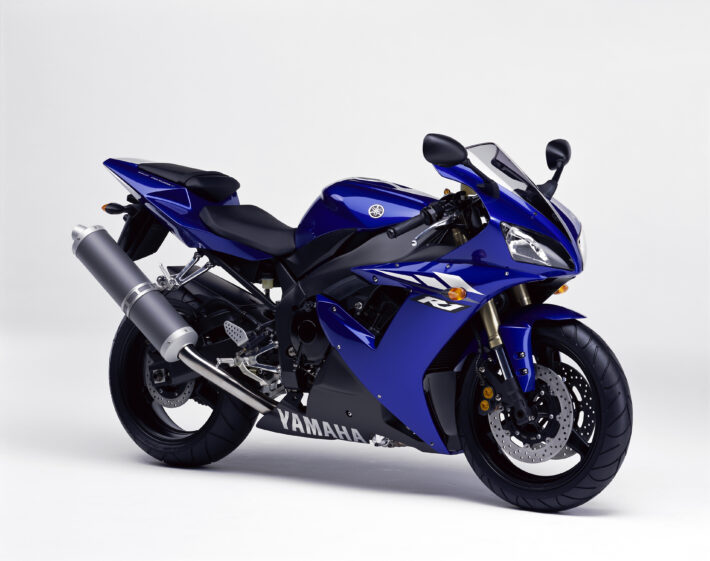
In the 25 years since, the R1 has evolved into the current fuel-injected, ride-by-wire high-tech spaceship which wins superbike races with ease. The engine has moved from five valves per cylinder to four (the five-valve heads were mostly marketing), and the bottom end features a big-bang style crossplane crankshaft. Here, rather than the pistons moving up and down in pairs, with even firing intervals, there’s an offset in the firing order, with cylinders firing at 90-180-180-270 degrees.
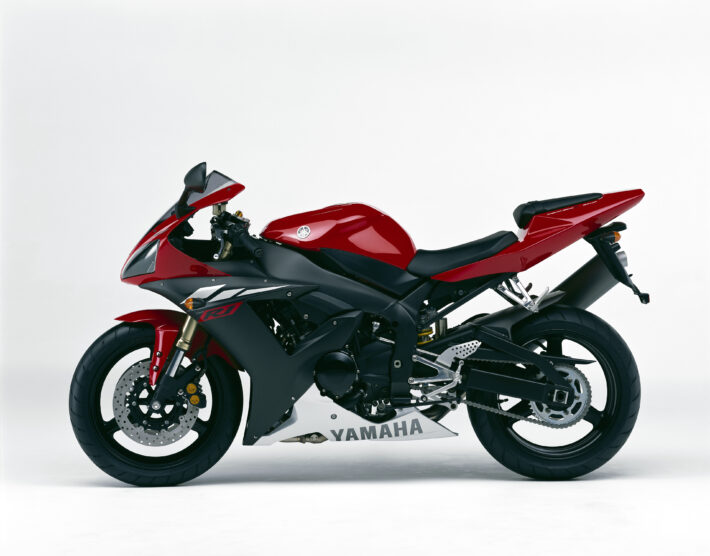
That gives the R1 an unmistakable sound, more like a big twin than a screaming four, and improves low-down drive. Power is now 200bhp with 177kg dry mass, and Yamaha has given its flagship sportsbike a stunning array of technology. Advanced IMU-assisted ABS and traction control lets the rider make the most of the performance with increased safety, and features like engine brake management, launch control, wheelie control all make life easier on track.
Yamaha also offers a higher-spec version of the R1 – the R1M. With this you get Öhlins electronically controlled suspension and even higher-spec electronics, on top of the standard R1 tech spec.
Yamaha YZF-R6
Back in 1998, the 600cc sportsbike class was the number one sector in the UK. We just couldn’t get enough of them: the Honda CBR600F, Kawasaki ZX-6R, Suzuki GSX-R600 and the Yamaha Thundercat. They were generally all-rounders though, with good road manners and fairly comfy riding positions – only the GSX-R600 was a bit more of a track weapon, with its roots in the GSX-R750 SRAD.
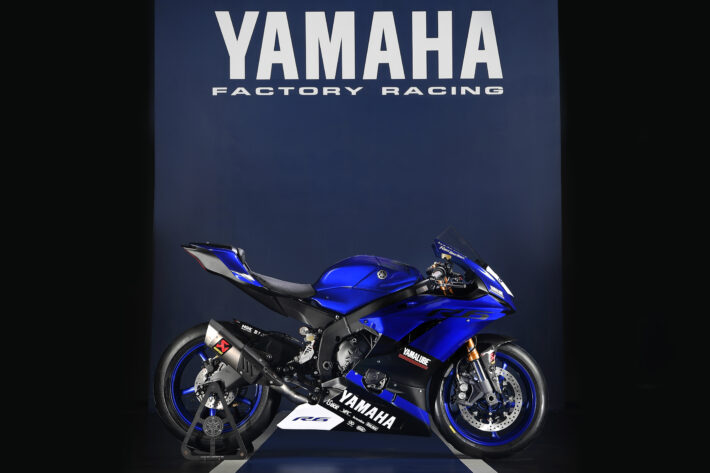
Yamaha saw which way things were going though: more extreme race-replica machines were grabbing the headlines, and with the growing popularity of production race series like the British Superbike championship and World Superbike, a more hardcore sports 600 seemed a solid plan. Enter the YZF-R6 in 1999. With styling borrowed from the already-massive-selling R1 launched the year before, the R6 wasn’t quite as revolutionary as its bigger sibling, but it still rocked the 600cc world.
An all-new motor replaced the elderly Thundercat design, which had traced its roots back to the ancient FZR600, and was bolted into a super-posh aluminium Deltabox frame. The light frame and new engine helped the R6 towards the top of the class, with dry weight of just 169kg and a claimed 120bhp output from the motor.
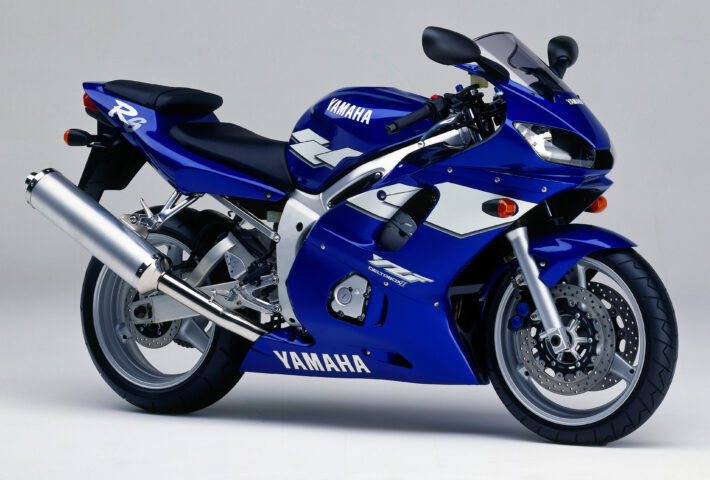
Conventional front forks and rear monoshock were fully adjustable and decent enough quality, but as with most Yamahas of the time, the brakes really stood out in terms of power and feel. The R6 didn’t sweep the board in the way the R1 did though: Honda’s CBR still won plenty of races, and was the better all-rounder, while the beefy ZX-6R was a touch faster up top.
Through the 2000s, Yamaha kept updating the R6, with fuel injection appearing in 2003, then USD forks in 2005. Peak power would hit 125bhp and the weight dropped down to 163kg. 2006 saw the biggest update though – a new engine with a stratospheric 17,500rpm redline on the tacho, and ride-by-wire fuel injection, a first on a bike. As it turned out, that redline was very optimistic: owners discovered that the engine actually hit the limiter much earlier, at just 15,800rpm, leaving Yamaha with a bit of egg on its face at the massively over-reading tachometer.
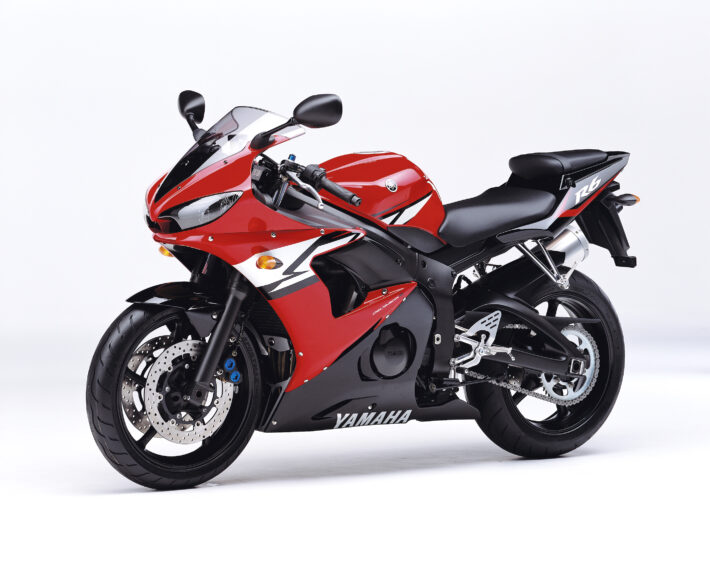
Gradually, the competition fell away through the 2010s as the 600 market shrank: Honda’s CBR600RR was a bit neglected by the firm, and updates stopped, and it was a similar story for the GSX-R, while Kawasaki had expanded its ZX-6R into a 636cc machine which was great on the road, but not eligible for supersport racing (it sold a limited edition 599cc version for a while). By the time the Kawasaki was back to a 599cc, the R6 was the choice of most racers. Road riders were moving onto new things: naked roadsters, retro machines and adventure touring bikes.
It was tighter emissions regs which really crippled the 600s though. They didn’t sell enough to justify developing new Euro4 engines for 2017, and to pass the test with an old motor, the firms needed to bolt on massive heavy catalysts, while reducing the power output. If you remapped the fuelling and fitted a race exhaust, all the power came back – but for the road, the 600s just didn’t really work anymore. Finally, Yamaha gave into the inevitable, and since 2021, the R6 has only been available in non-road-legal track form, more like a motocross bike than a road bike.
Yamaha MT-10
By 2016, Yamaha’s MT range was rocking, with the MT-09 and MT-07 both selling like the proverbial hot cakes, and even the MT-03 entry-level machine doing well. But it was about to get even more serious, with a new 1000cc version, the MT-10, which would replace the elderly, rather lacklustre FZ-1 Fazer in the firm’s line-up.
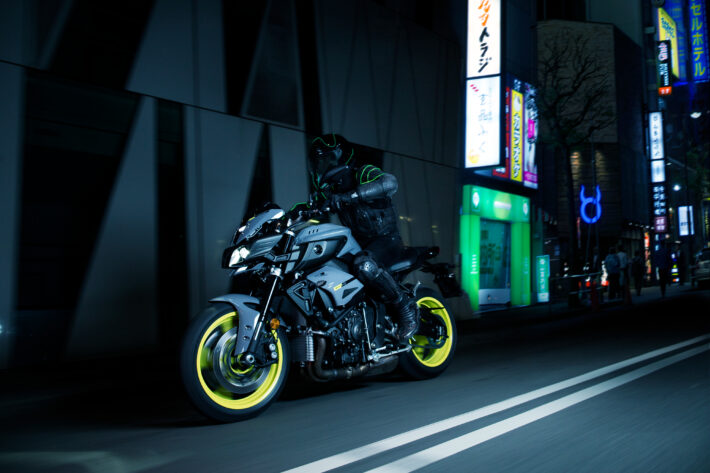
Unlike the other MT models, the 10 was a simple swap job: Yamaha just took the engine and almost the entire chassis from the contemporary R1 superbike, and converted it into a wild Transformer-like hyper-naked machine. Just like the old days, where streetfighter fans pulled the fairings off GSX-R1100s and fitted MX bars, the MT-10 was short on compromises and long on performance. Okay, the engine was detuned a little – but it still put out nearly 160bhp, and had even more low-down grunt – with lower final drive gearing adding even more pep. A kerb weight of 210kg is also pretty good for the class, though a good bit chunkier than the very flashest Euro-nakeds.
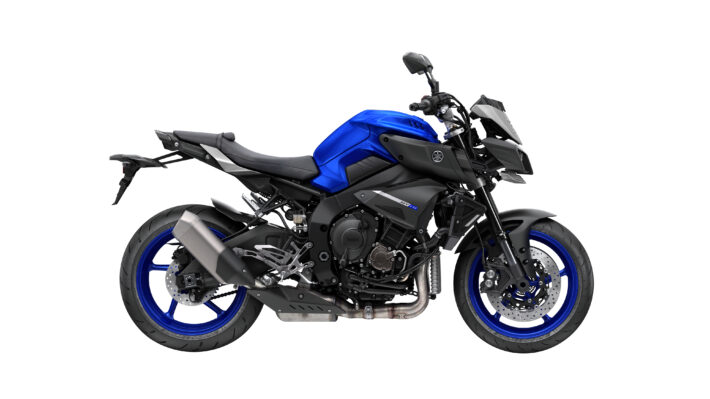
The electronics package was good for the time, with cruise control as well as traction and ABS – though it didn’t have IMU-assisted rider aids (that would come later with the 2022 variant). A couple of years later, Yamaha brought out an SP version, which added Öhlins semi-active electronic suspension to the mix, as well as the full-colour LCD dash missing on the original MT-10.
The current model, released for 2022, has an engine overhaul, with offset steel conrods replacing the expensive lightweight titanium parts used before. That adds inertia to the powertrain – no bad thing on a naked road bike – as well as saving Yamaha some cash on the bill of materials. The motor makes 6bhp more than before – always nice – and it has had a radical cosmetic overhaul which is a little controversial. The original MT-10 was no natural beauty, but the latest one is too much for some folks. You’ll know if that matters to you of course.
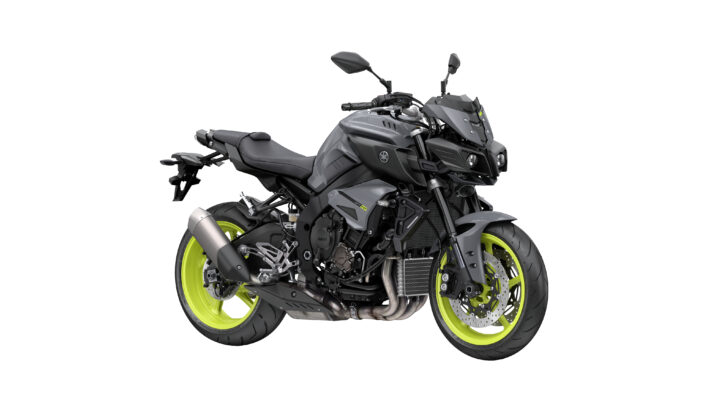
Add in the IMU-assisted rider aids, quickshifter, the colour LCD dash, new titanium exhaust and a host of other tweaks, and the latest MT-10 is a proper piece of kit. There’s an SP option for 2022 as well, with second-generation Öhlins semi-active suspension added to all the other upgrades – nice.
XJR1300
Oooh that’s a proper bike, isn’t it? The XJR1300 is a genuine old-school piece of kit, which was put out of business in the mid-2010s by tighter emissions rules, that its hairy-chested, air-cooled 1,251cc couldn’t match. It had escaped death earlier back in 2006, when Yamaha replaced its old carburettors with a new fuel injection system and added a catalytic convertor setup – cleaning up the emissions nicely. But by 2015, the firm couldn’t keep the old bus legal any more.
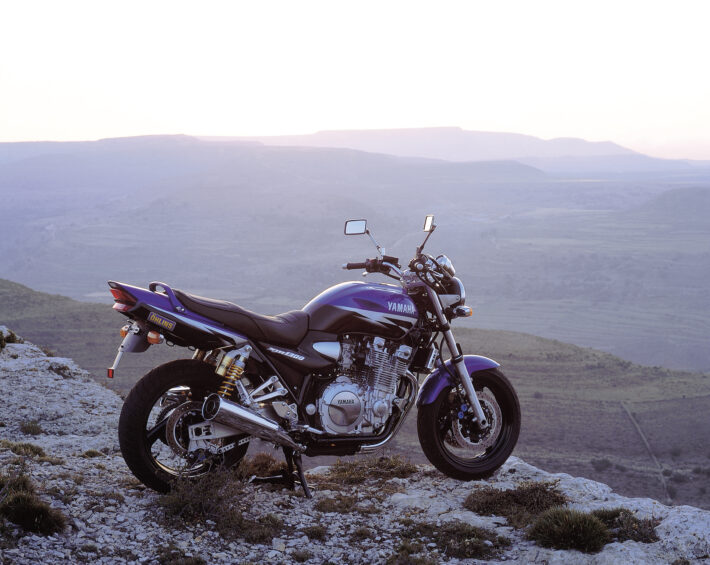
The engine itself goes way back, to the old FJ1100 sporty-tourer, where the basic air-cooled DOHC 16-valve carburetted design first appeared. It went on to power the FJ1200 with a 3mm bigger bore – and this motor also powered the first big-bore XJR, the 1994 XJR1200.
For 1999, the motor gained another 2mm overbore to make the XJR1300 motor.
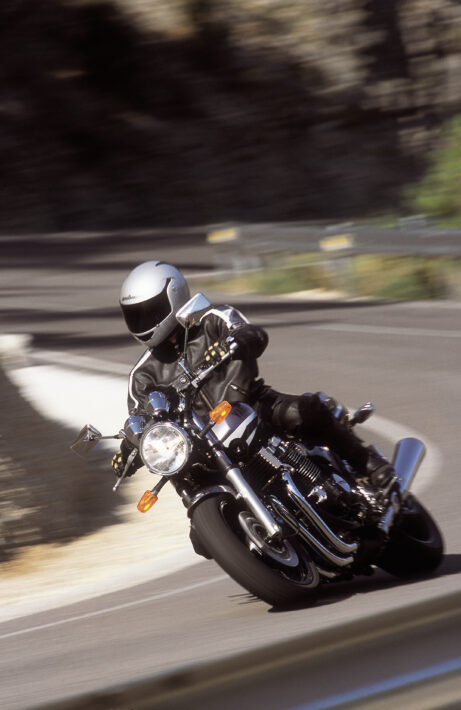
The XJR1300 made around 105bhp, and thanks to low-compression and soft cams, it had a lovely grunty torquey power delivery. Compared with revvier competitors like the Kawasaki ZRX1100, it was much more relaxed, and could get away with a five-speed gearbox without any downsides.
The chassis was a mix of old and new tech. The main frame was a steel tube double cradle design with conventional forks and twin-shock rear suspension. But the swingarm was a lovely fabricated aluminium part, and the twin shocks were adjustable Öhlins units, with remote reservoirs (originally only on the SP version, later standard). The XJR13 also got Yamaha’s premium brakes: the four-piston monobloc calipers shared with the likes of the Thunderace and R1 superbikes.
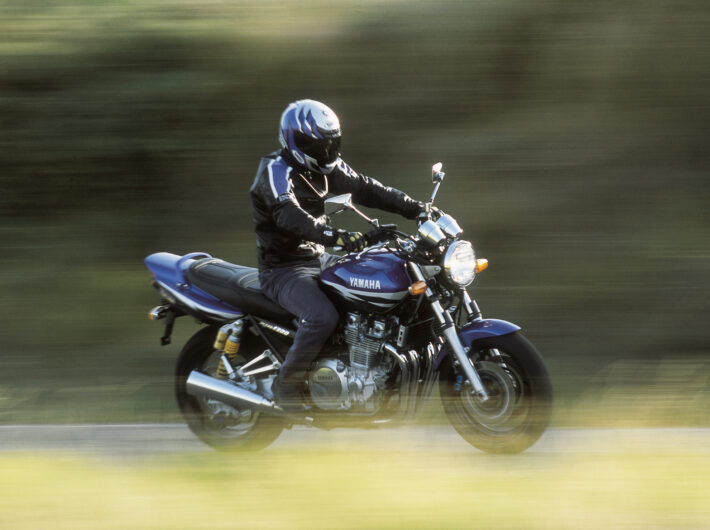
Over its 15 year lifespan, the XJR1300 was a bit of a quiet seller for Yamaha. It was a bit pricey thanks to its premium components, and was hugely outsold by cheaper options like the Suzuki Bandit 1200. Now, though, it’s properly on-trend, with amazing retro looks, still-solid performance, and great reliability. If you can find a nice one at good money, it has to be a solid bet as a great ‘future classic’ machine…
MT-07
The decline of the 600cc inline-four class left a bit of a gap in the market for folks looking for their first ‘big’ bike. Once you have a full licence, you don’t need to bother with little 400 twins or 600 singles – but you don’t necessarily want to go straight to a litre-class machine either. Enter the middleweight twins. They’d always been there, with options including the Suzuki SV650 and Kawasaki ER-6. But in recent years, the class has taken off, and new models like the Yamaha MT-07 are a big part of the story.
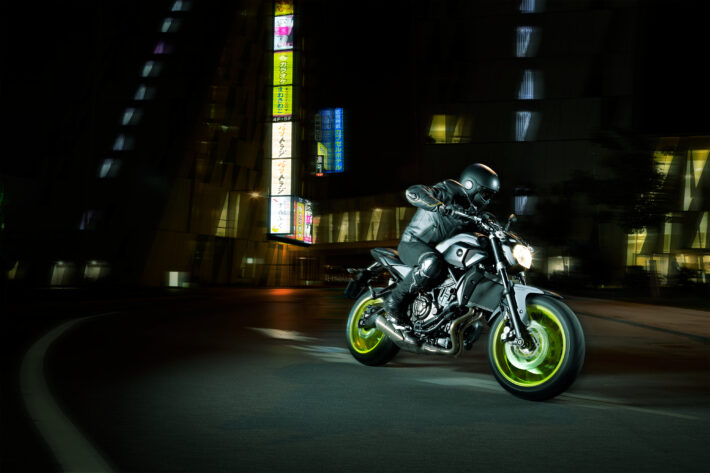
Launched in 2014, alongside the three-cylinder MT-09, the MT-07 used a new ‘CP2’ parallel twin engine with 689cc capacity, putting out 74bhp. It had four-valves per cylinder, DOHC, water cooling and fuel injection – all standard enough kit. But Yamaha gave its parallel twin an offset crank, so the pistons aren’t moving up and down together, or 180° out of sync as in old-school twins. Rather, the crank was a ‘cross plane’ design, where the crankpins are 270° apart, giving an off-beat firing order, more like a V-twin.
The chassis was also fairly standard in terms of design: a steel tube frame with aluminium monoshock swingarm, conventional non-adjustable forks and Yamaha’s monobloc four-piston front brake calipers. Basic ABS looked after stopping safety, but there was no traction control or other riding aids.
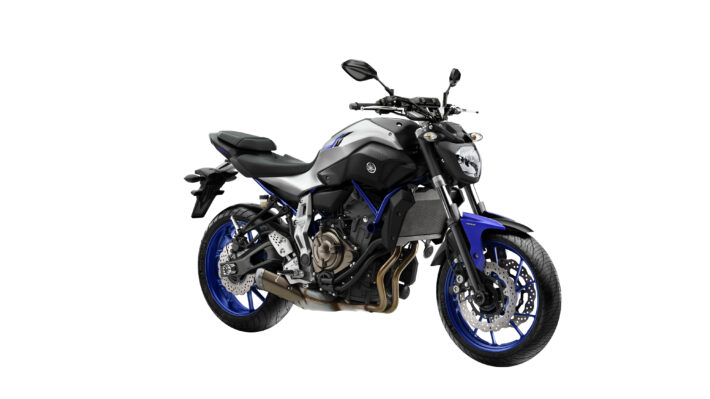
That original MT-07 was great fun, and well-priced, and the only criticism was the basic suspension setup. Aftermarket parts could improve matters (Yamaha actually offered an Öhlins shock as an official performance upgrade option), but the 2018 updated model sorted those complaints out with an improved suspension package. For 2021, the bike got a retuned Euro5-compliant motor, and larger brake discs up front.
Those small tweaks made an already-good bike even better. And Yamaha’s made good use of the basic engine and chassis package, as it did with the MT-09 range. The 689cc motor has also appeared in the Tracer 700 sporty tourer, Ténéré 700 and World Raid adventure bikes, the XSR700 retro roadster, and for 2022, the R7 supertwin sportsbike.
3 comments on “Top 10 Yamaha Motorcycles”
No mention of the 1200 Super Tenere? Certainly a better bike than some on your list. Just because it didnt sell as many doesnt mean its not a great bike
“the naked FZ-1 and faired FZ-1 Fazer – was a bit of a downgrade in some ways. The second-generation bike had ABS as an option, but was heavier, and the fuel injection was not Yamaha’s finest work. And though the fuel mapping was much improved in later iterations, it took a while to match the rideability of the old carburetted bike – and never really had the aggressive nature of the original.” – who wrote this? there’s no way the FZ1 was a downgrade, it has a sportier riding experience than the gen 1 1000 fazer, it is also around 10kg lighter, the only true bit is the part about snatchy fuel injection, the very first road test bikes were like this and further tweaks were made later on.
I’ve had my Fzs 600 (2002) now for 2 years and love it.
Ok it’s a bit old now and not as pretty as some of the new bikes out there but the reliability is fantastic.